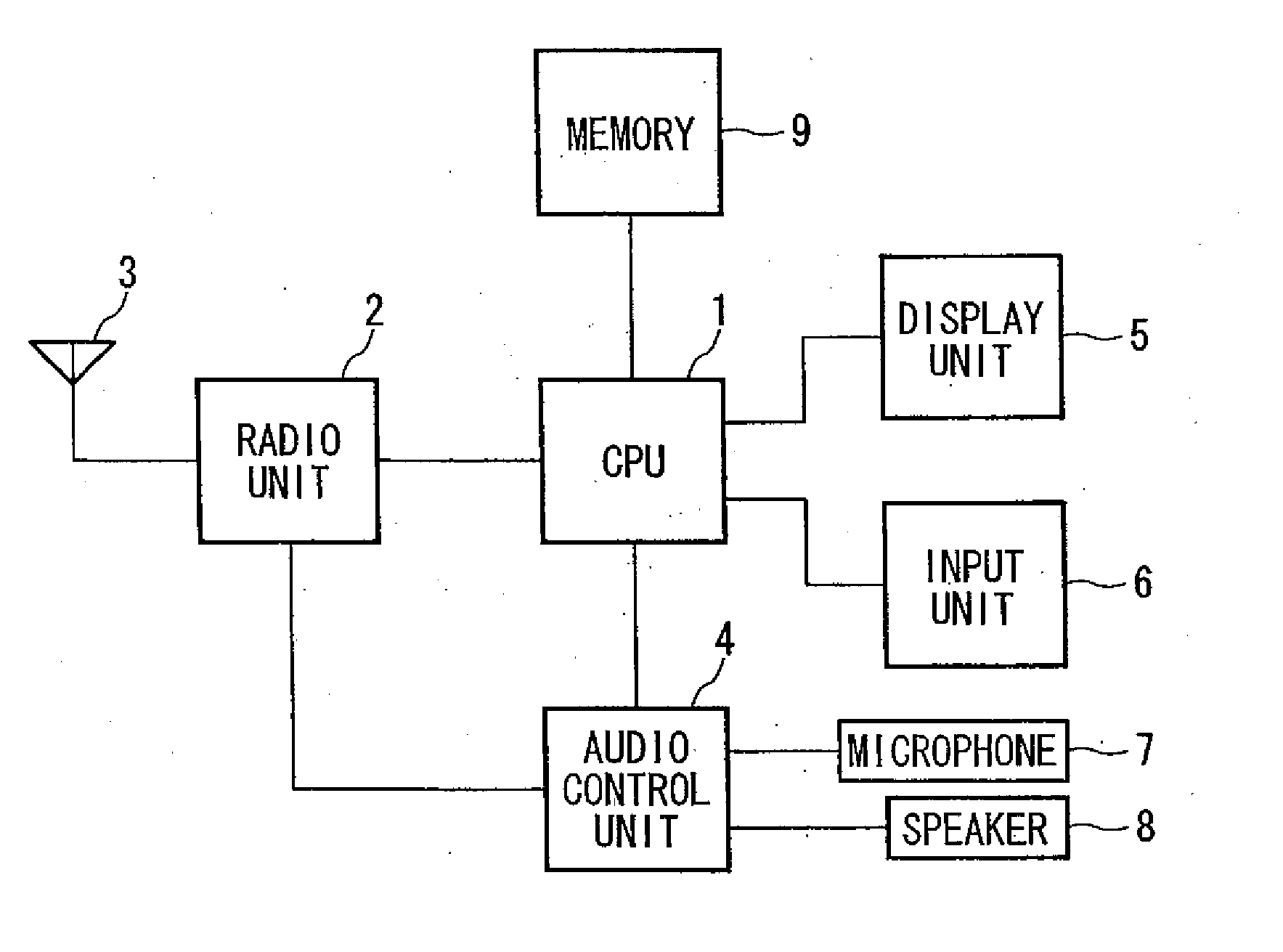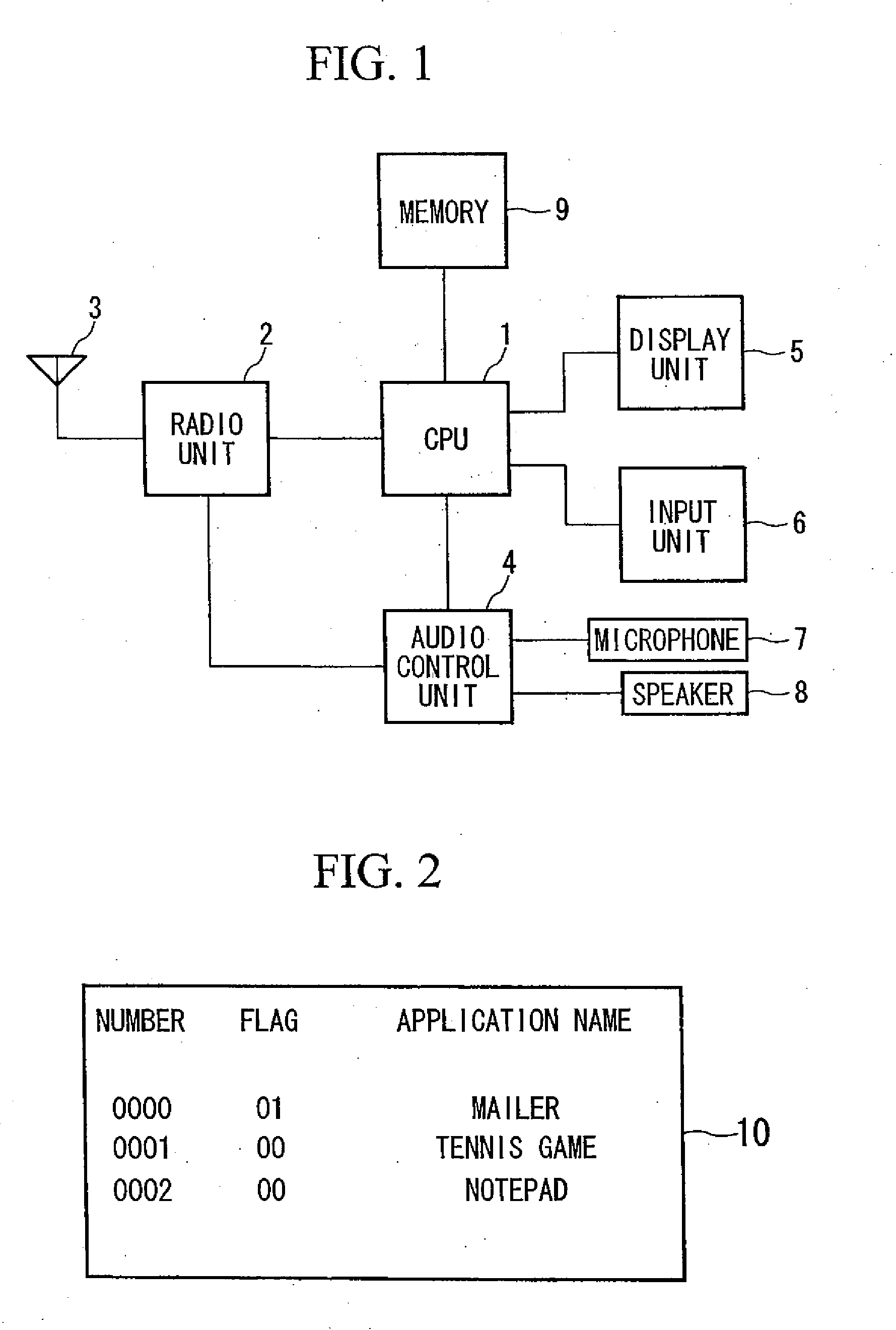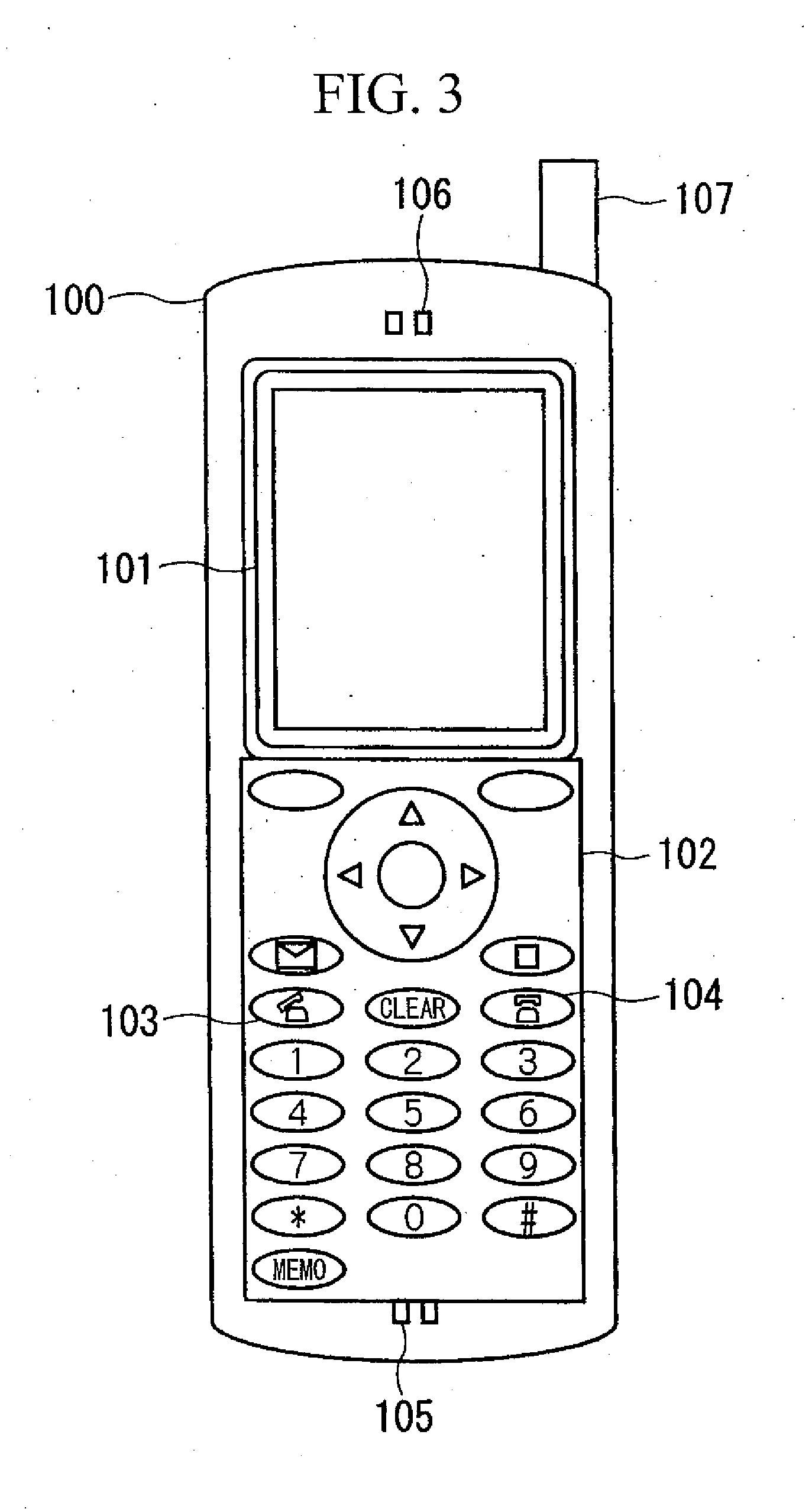Mobile Terminal, Method for Controlling Mobile Telephone Terminal, and Mobile Telephone Terminal
a mobile telephone terminal and terminal technology, applied in the field of mobile terminals, can solve the problems of reducing the usability and display speed of mobile telephone terminals, preventing users from receiving to incoming calls, and cpu (central processing unit) processing power limited and memory limited, so as to reduce the processing load of cpu, save memory space, and prevent the effect of reducing the usability and display speed
- Summary
- Abstract
- Description
- Claims
- Application Information
AI Technical Summary
Benefits of technology
Problems solved by technology
Method used
Image
Examples
first embodiment
[0043] In the following, various embodiments according to a first aspect of the present invention will be explained with reference to the drawings. FIG. 1 is a block diagram illustrating a structure of a mobile telephone terminal, as an example of a mobile terminal according to the first aspect of the present invention. This mobile telephone terminal is controlled by a CPU 1, and includes a radio unit 2, an antenna 3, an audio control unit 4, a display unit 5, an input unit 6, a microphone 7, a speaker 8, and a memory 9. The antenna 3 is connected to the radio unit 2, and sends to and receives from a base station a radio signal. The received signal is handled by the audio control unit 4, and a corresponding sound is then output from the speaker 8. An audio signal input from the microphone 8 is sent to the radio unit 2 via the audio control unit 4, and sent to the base station via the antenna 3. The memory 9 stores application programs, input data, telephone numbers and email address...
second embodiment
[0051] Next, the first aspect of the present invention will be explained with reference to the flowchart of FIG. 7.
[0052] It is notified that a new application was started while an application is executed in step S501. The user selection screen 108 is displayed in step S502, and the user is prompted to choose an operation to be performed on the application that is currently displayed in step S503. When the user selects “QUIT,” the application is terminated and an entry corresponding to the terminated application is deleted from the task list 10 in step S504. If the user selects “PAUSE,” the application is paused and the flag indicating the attribute of the application is changed to “00” in the task list 10 in step S505. If the user selects “CONTINUE,” the application is continued to be executed. In the manner described above, when the user selects either “QUIT,”“PAUSE, ” or “CONTINUE” in the user selection screen 108, the new application is displayed in step S506.
[0053] According t...
third embodiment
[0054] Next, the first aspect of the present invention will be explained with reference to the flowchart of FIG. 8.
[0055] When it is notified that a new application was started while an application is executed in step S601, it is determined whether or not the current usage of the memory exceeds a certain threshold to start an application in step S602. If the current usage of the memory exceeds the threshold, the user selection screen is displayed in step S603, and the user is prompted to choose an operation to be performed on the new application in step S604. If the user selects “DO NOT START,” the start of the new application is cancelled in step S605.
[0056] If the user chooses “START,” the new application is started and added to the task list 10. After The attribute of the task list is set to “01” in step S606, the new application is displayed in step S607.
[0057] According to this embodiment, when a new application is started while an application is executed, the user is prompte...
PUM
 Login to View More
Login to View More Abstract
Description
Claims
Application Information
 Login to View More
Login to View More - R&D
- Intellectual Property
- Life Sciences
- Materials
- Tech Scout
- Unparalleled Data Quality
- Higher Quality Content
- 60% Fewer Hallucinations
Browse by: Latest US Patents, China's latest patents, Technical Efficacy Thesaurus, Application Domain, Technology Topic, Popular Technical Reports.
© 2025 PatSnap. All rights reserved.Legal|Privacy policy|Modern Slavery Act Transparency Statement|Sitemap|About US| Contact US: help@patsnap.com



